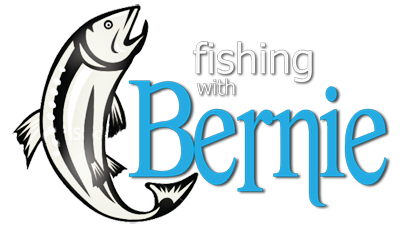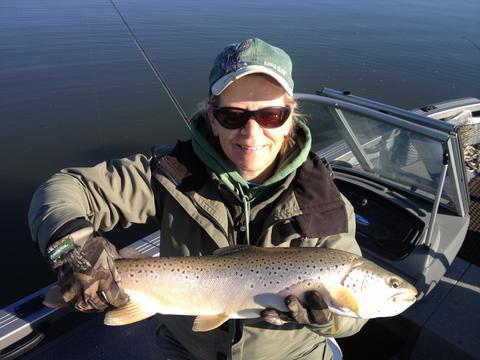Savvy trout anglers know that early spring offers some of the year's best fishing. Winter-weary lakers, browns and rainbows strap on the feedbag and prowl predictable shoreline hangouts once the lakes shrug off their icy winter cloaks.
When the bite is on, trout fans armed with the right lures can enjoy epic action. To help you catch the most fish possible on every trip this spring, veteran trout guide Bernie Keefe offers his five favorite baits for tangling with ice-out trout.
1. Stick It To 'Em
Under the right conditions, slender, shallow-running, minnow-imitating hardbaits are hard to beat. "Baits like Berkley's Cutter 90 and Cutter 110 are phenomenal early in the morning, from first light until the sun hits the water," says Keefe. "They're also great choices when the wind kicks up a chop later in the day."
Such lures shine over shallow flats, along points and over other feeding areas where trout chase baitfish and other sources of sustenance. "Fish them with an erratic, twitch-pause retrieve," he advises.
To cover more water when casting from shore, Keefe makes long casts at a 45-degree angle to the bank until fish are found. "Cast, reel in, then walk down the bank almost to the point where the lure landed, and cast again," he explains. "If you're fishing from a boat, use the electric trolling motor to keep moving at a fairly good clip while casting toward the shoreline. Afoot or afloat, the goal is to cover ground until you locate fish. Once you find them, saturate the area with casts until they quit biting."
2. Tube Time
As the sun rises over calm waters, trout move toward steeper bottom tapers in slightly deeper water. "Casting a 3- to 4-inch soft-plastic tube bait like a Berkley Havoc Smash Tube on a 1/4- to 3/8-ounce jighead into 15 to 20 feet of water is a great way to contact these fish," says Keefe.
"Cast, let the jig fall to bottom and, while keeping your rodtip low, retrieve the tube in 6- to 12-inch twitches that imitate crayfish and small minnows darting along the bottom," he continues. "In between twitches, the jig should hit bottom while you reel in slack line and move the rodtip forward in preparation to make the next twitch."
Strike detection is largely a visible matter. "Watch your line like a hawk," he says. "If it twitches or jumps, set the hook." One final caveat: Since tubes are fished on and just above bottom, Keefe doesn't recommend tubing over extremely rocky areas.
3. Soft Swimmers
"Soft-plastic swimbaits like the Berkley Ripple Shad are another great lure choice in calm, sunny conditions," Keefe says. "As with tubes, 3- to 4-inch baits on a 1/4- to 3/8-ounce jighead excel in depths of 15 to 20 feet."
Unlike tubes, swimbaits are fished above bottom. "Match jig weight to swimbait size, so the bait has the right wobbling action on a slow retrieve, without falling to bottom and snagging in the rocks," Keefe notes. "Experiment with steady and subtle lift-fall retrieves until the trout let you know what they're in the mood for at the moment."
To determine the most productive part of the water column, Keefe fishes different levels until a pattern emerges. "On your first cast, count the jig down until it hits bottom, then retrieve the bait just above it," he says. "Every cast after that, reduce your drop count by five until you find the strike zone."
4. Spoon Feeding
Ever a metal fan, Keefe isn't shy about tying on a flashy spoon in sunny weather. "Spoons are deadly for targeting trout suspended over deep water," he says.
Reaction strikes are the goal when spoon feeding trout. "Cast, let the spoon fall to the level you want to fish, and retrieve with a twitch, pause, flutter cadence," he explains. "The more erratic, the better. Clam's Super Leech Flutter Spoon is my favorite because the lightweight, zinc-alloy construction allows you to really dance it in the water."
5. Hard-Bodied Swimbaits
In low-light periods early and late, or windy, cloudy conditions throughout the day, Keefe often turns to a 6-inch or larger, hard-bodied swimbait like the Sebile Magic Swimmer.
"Hard plastic and wooden swimbaits are big-fish magnets, best for covering a lot of water, fast, while casting over large flats, along points and in other sweet spots," he says. "Match lure color to that of the forage base, which in prime trout fisheries is often rainbow trout or suckers."


















